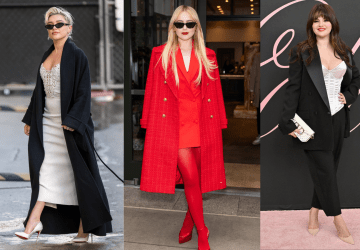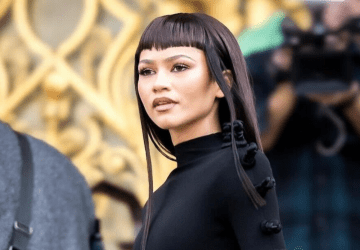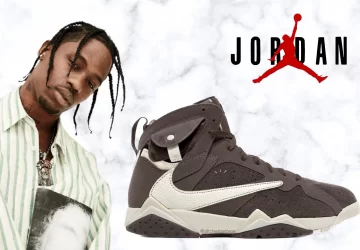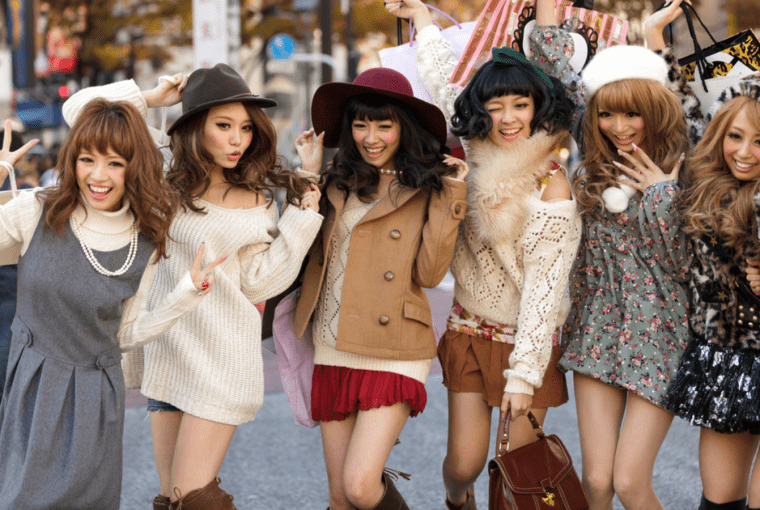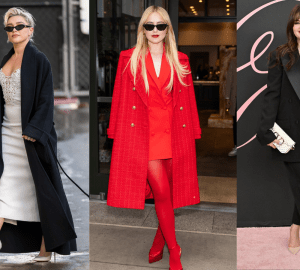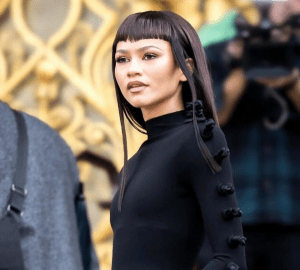The 1990s marked a remarkable era in Japanese fashion, characterized by a unique blend of traditional elements and modern influences. The Japanese fashion trends of this decade were driven by a surge of creativity, rebelliousness, and a desire to break conventional norms. This blog will explore the captivating world of Japanese 90’s fashion, its iconic elements, influential subcultures, and lasting impact on the global fashion scene.
The Impact on the Western World
Traditional Japanese Fashion Inspirations
Japanese 90’s fashion found its roots in the rich heritage of traditional Japanese clothing. Elements such as kimonos, obis, and yukatas inspired modern designers to incorporate traditional patterns, fabrics and silhouettes into their creations. The harmonious blend of old and new gave birth to a distinct fashion movement that captured the world’s attention.
Western Influence on Japanese Style
The 1990s witnessed an influx of Western culture into Japan, impacting various aspects of life, including fashion. Japanese youth were drawn to Western musicians and celebrities’ vibrant and edgy styles. This amalgamation of East and West resulted in a fashion landscape that was both eclectic and dynamic.
Rise of Tokyo Fashion Scene
Tokyo emerged as the epicenter of Japanese 90’s fashion. Districts like Harajuku, Shibuya, and Shinjuku became hotspots for avant-garde styles, street fashion, and creativity. The streets of Tokyo turned into vibrant runways, with individuals showcasing their unique fashion statements.
Few Japanese Street Fashions for Women
In Japan during the 1990s, the style fluctuated, captivating and deserving of restoration again and again in 2020 and the past. So we returned on schedule and meandered the streets of Tokyo to track down the best Japanese fashion trends of the 1990s.
Schoolgirl Chic
Perhaps the most notable Japanese style of the 90s was the school-young lady style, known as Kogyaru (or Kogal). This pattern was characterized by exceptionally short plaid school uniform skirts, knee-high white socks worn free, cowhide shoes, a round-neckline shirt, and a larger-than-average shirt sew sweatshirt. A name-brand scarf, for example, Burberry, was likewise a famous expansion.
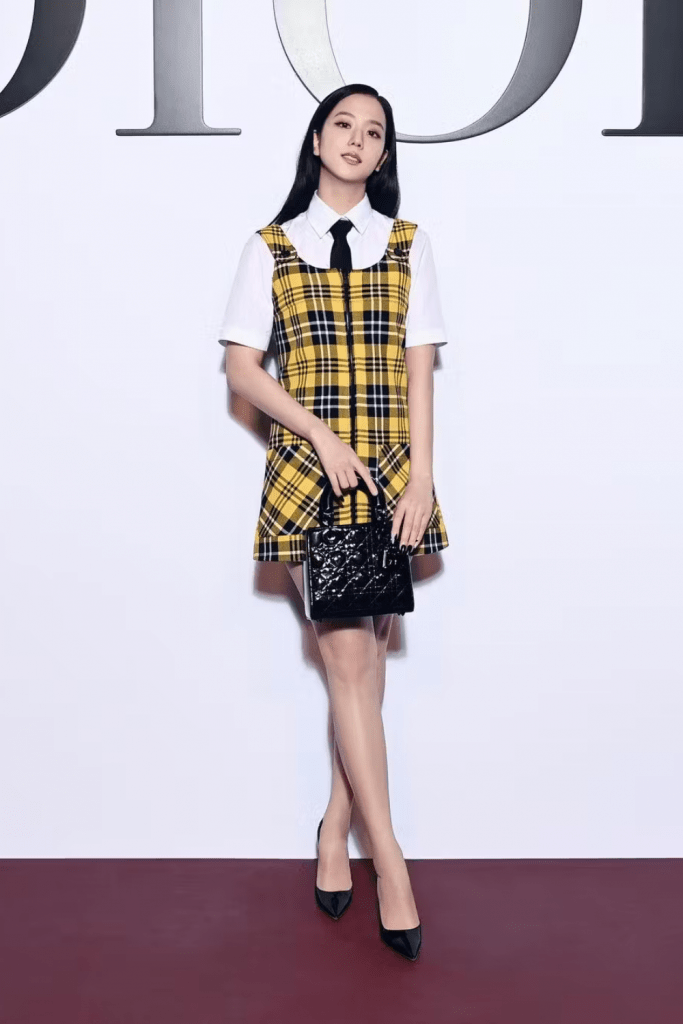
Instructions to:
- Make the look somewhat more age-proper by wearing a marginally longer skirt, and keep away from plaid on the off chance that you would prefer not to be too “school-driven.” Instead, pick a high-waisted, box-creased skirt that closes mid-thigh and pair with misty or sheer leggings.
- To make it more streetwear and less school-wear, pair the skirt with a slouchy tee into the skirt, maybe with frivolity or strong print.
- Blazers or suit coats give more construction than sew sweatshirts, raising the look to a more expert level.
- Finish the look off with adorable calfskin brogues and a silk bowtie.
Harajuku Style (decora)
Perhaps the most famous and very much perceived Japanese 90’s fashion and past is the Harajuku style, otherwise called decora. While there are numerous styles inside the Harajuku region, and the “Harajuku style” is a blend of many design clans, the overall population considers decora when considering Harajuku young ladies.
There are various Harajuku design styles, and practically everyone has tracked through worldwide waters and has earned unfamiliar fans from one side of the planet to the other. However, there are not many that are more prominent than the others.
The wild and bountiful utilization of shading, animation character motivation, and an eruption of frills portrays this style. Decora is young and fun; you can’t resist the urge to grin when you see it. Even better, why not wear it?
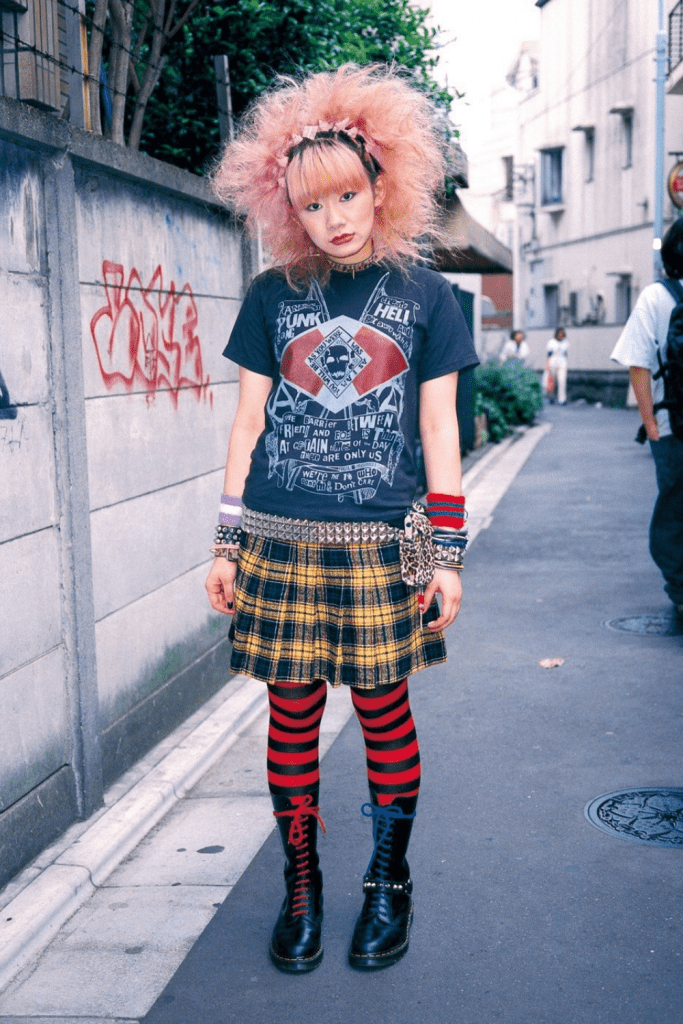
The most effective method to:
- Look for an erupted or tutu-style skirt that secures the midriff to make a complimenting outline. Pair with a splendid tee in pastel or neon concealer or realistic animation.
- Find a couple of designed stockings or leggings to wear under your skirt for additional inclusion, as knee-high socks can be somewhat less age-proper once we hit our mid-20s and past (murmur, however, it’s actual). Think leggings with bows, natural products, little cats, hearts, or anything adorable and sweet.
Lolita Kawaii
Lolita Kawaii (kawaii signifies “cute”) was a significant pattern in the Japanese design scene during the 90s (and still is). The look includes Victorian-propelled garments with heaps of ornaments, child pink, super ladylike, silly, and doll-like. Think parasols, trim, hats, undergarments, silk, and strips in the hair.
Notwithstanding, it’s not all silly and reddened; there’s likewise the gothic Lolita sub-pattern, with generally dark or grouchy conditioned garments and regularly a profound lip. Nevertheless, the Lolita look is a committed way to deal with outfit style design and a gesture to the inventive way numerous Japanese ladies approach to apparel and individual feel.
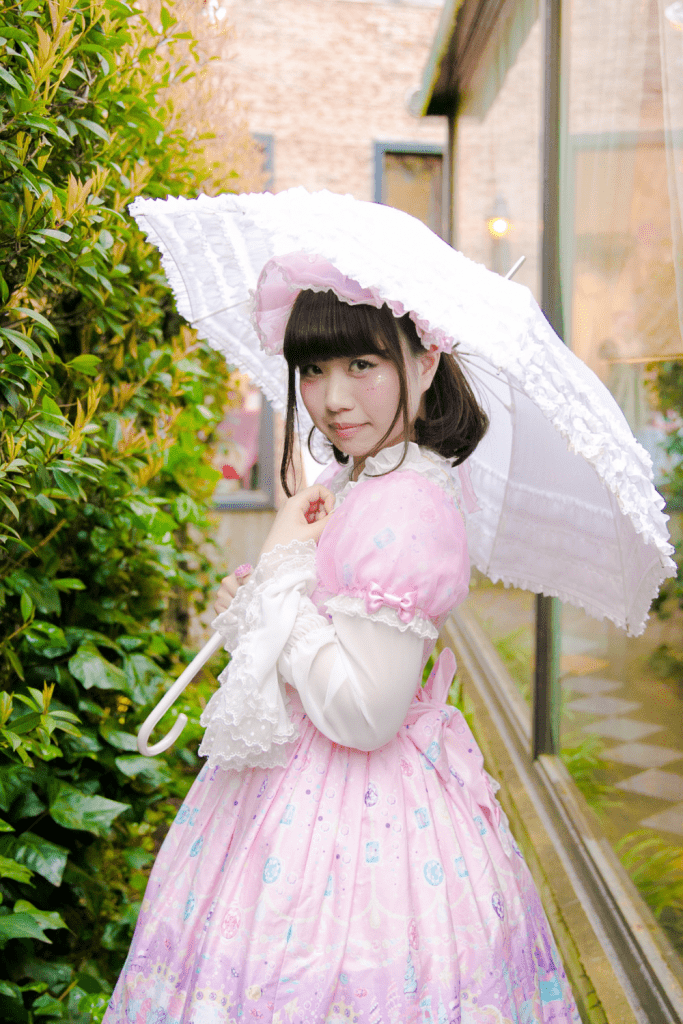
Step-by-step instructions to:
- Put your twist on the look by handpicking the viewpoints you appreciate and can find a way into your everyday life. For example, you may choose a pale pink glossy silk undergarment top with wide-leg pants, a ribbon bolero, and a bow-embellished headband.
- Pair an elegant, ladylike pink dress with a fitted abdomen and erupted skirt with a couple of calfskin studded boots—this breaker Lolita Kawaii with 90s grit is an amazing combo.
Visual-Kei
During the 90s, the style known as Visual-Kei rose in mainstream society, coming from Visual-Kei groups like X-Japan. The Visual-Kei design is stylish, striking, insubordinate, and over-the-top. It has regularly been contrasted with other music-propelled patterns, such as glitz rock, with many cowhide pants, high-as-can-be Mohawks, and thick hermaphroditic cosmetics.
Visual-kei wires numerous styles like troublemaker, grit, and, surprisingly, a bit of the Lolita pattern! You may see unpredictable coats with trim and boning, calfskin bodices, or servitude-style coats worn by overexposed middles.
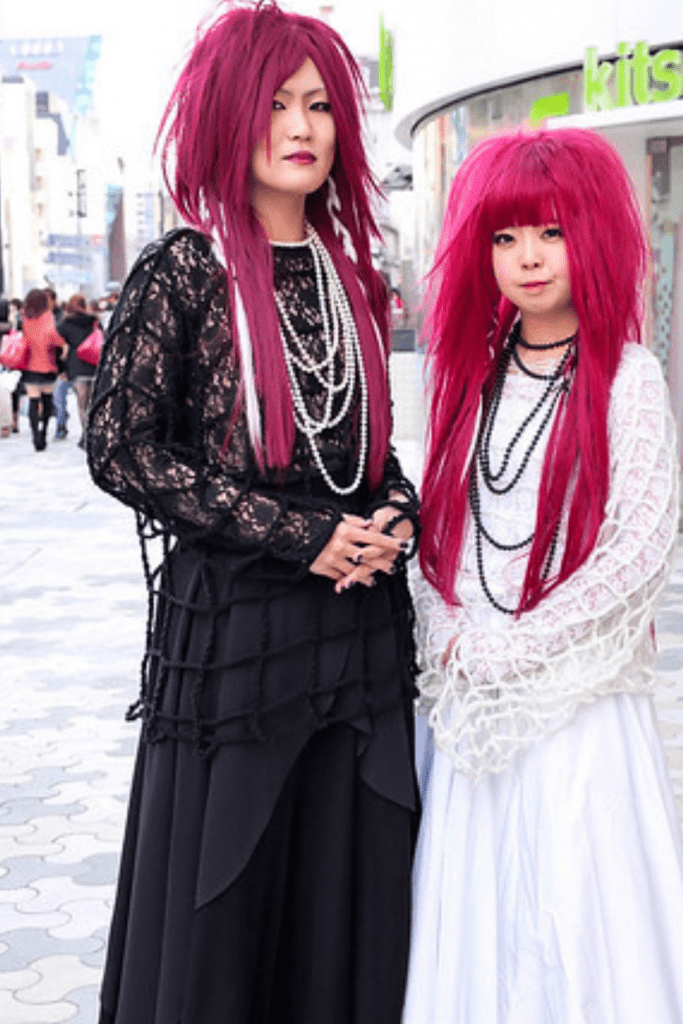
Instructions to:
- Be courageous, color your hair a striking shade of orange or Fuschia, and heap it on your head in spikes.
- Embrace layering various surfaces like calfskin, ribbon, and fancy weaving.
- Cut the cheekbones with a cool-conditioned forming conceal for sharp lines, with Smokey, rakish eye cosmetics, and red lips.
- Don, a multifaceted military coat with gold, fastens, ribbon edging, pants, and a studded belt.
Gyaru (Ganguro) Style
Ganguro is perhaps the most extraordinary Japanese 90’s fashion. The look was worn by Gyaru young ladies who might apply a deep, orange-conditioned phony tan and establishment, with super-pale lips and brutal dark eyeliner. The eyes were frequently made-up with pale, pearlescent shadow, dark bogus eyelashes, and a lot of dark eyeliner.
The lips were once in a while made pale with a light concealer (a limited illustration of the “concealer lips” pattern worn by Western ladies, for example, Christina Aguilera during the 00s). Ganguro young ladies frequently wore long phony fingernails, loads of splendid gems, miniskirts, tanks, and stage heels.
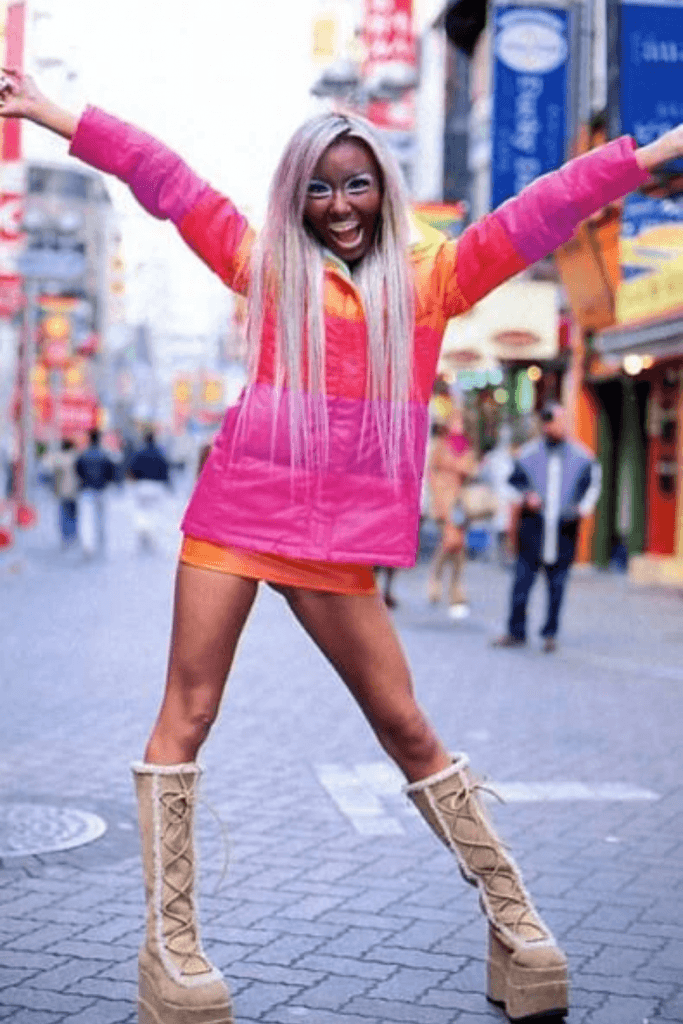
Instructions to:
- Tone down the look by tanning the skin with a warm-conditioned bronzer while remaining consistent with your characteristic skin tone.
- Wear pale pink or naked lipstick and utilize a somewhat hazier lip liner to add warmth and life to the lips.
- Try a profound earthy-colored or bronze eyeliner to avoid the danger of making unforgiving lines, particularly during the day.
- Use pastel-shaded face paints or fluid eyeliners to draw fragile blossoms or hearts on your cheeks for concerts (or an unconventional end of the week).
Sacai
Charged as garments for the 21st-century lady, Sacai is tied to separating the boundaries among easygoing and formal wear. The brand has a male/female style with deviated lines and layered textures, from Shirt dresses to a tuxedo-sweatshirt and sweaters intertwined with shirts. Japanese planner Chitose Abe dispatched Sacai from home on maternity leave in 1999. Sacai has become so mainstream today that it’s worked with names like Vans and Moncler and is sold by more than 175 global retailers.
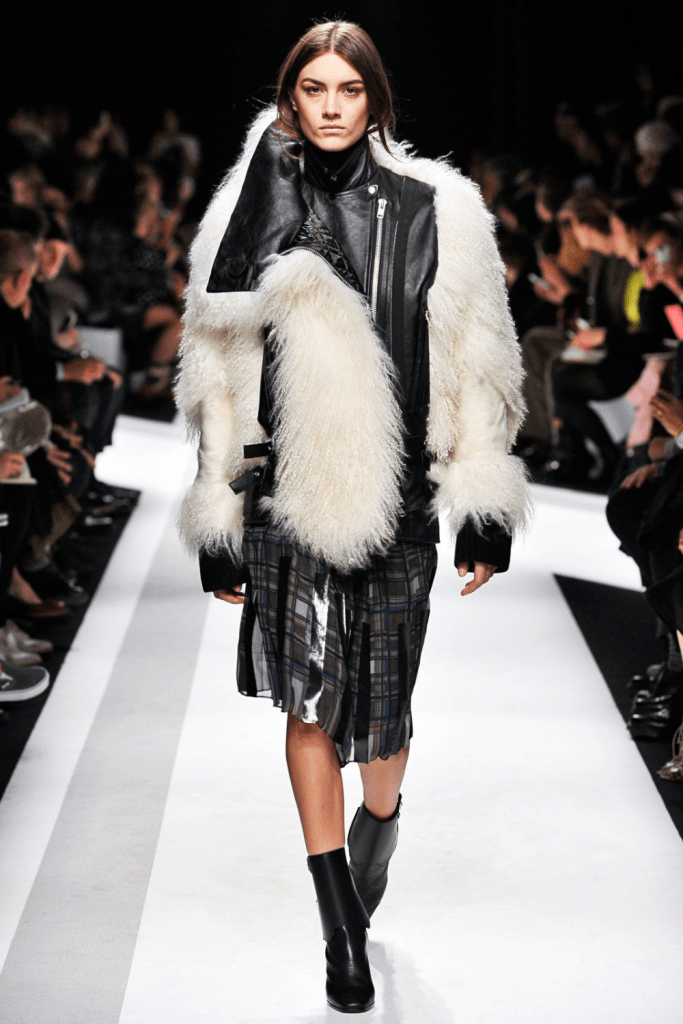
Cult Party Kei
Cult party kei, named after the Harajuku shop Faction Gathering (presently known as the Virgin Mary), is a generally recently authored style that depends on Western strict ancient rarities like peevish or books of scriptures. Regular perspectives incorporate crosses wired in yarn, layers of texture in delicate shadings, heaps of cream trim, silk bows, and book of scriptures prints.
The make-up and hairdo aren’t just about as ludicrous as different styles. Religion party Kei is regularly worn with common turning make-upward, no bigger accentuation on the eyes, and straightforward hair-dos with roses. Some consider cult party Kei to be a subset of cart Kei.
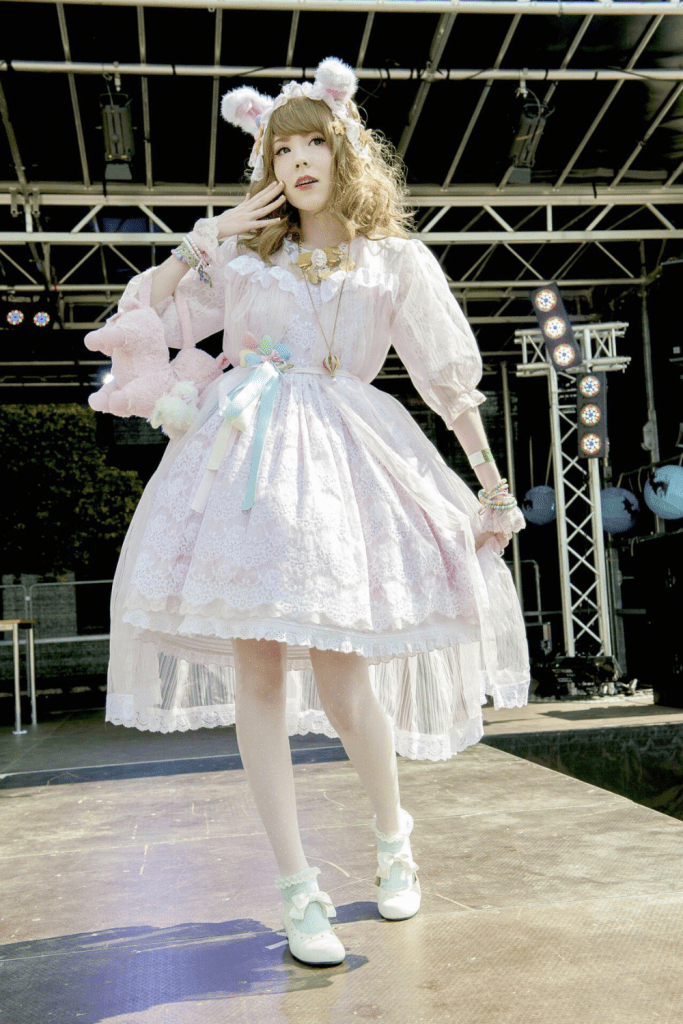
Kimono Style
Despite Japan’s inescapable idea of Western attire, Japanese style is impacted by conventional garments, with individuals wearing the kimono daily; however, the vast majority wear it just for weddings, graduations, and other proper events.
Regardless of the vigorously decreased quantities of individuals wearing kimono as regular apparel, the younger age in Japan can, in any case, be believed to blend kimono and present-day style in design, wearing current footwear and frill rather than the ordinary geta and kanzashi normally worn. Moreover, even current fashioners have utilized the kimono as motivation, as the “TANZEN” assortment from creator Issey Miyake.
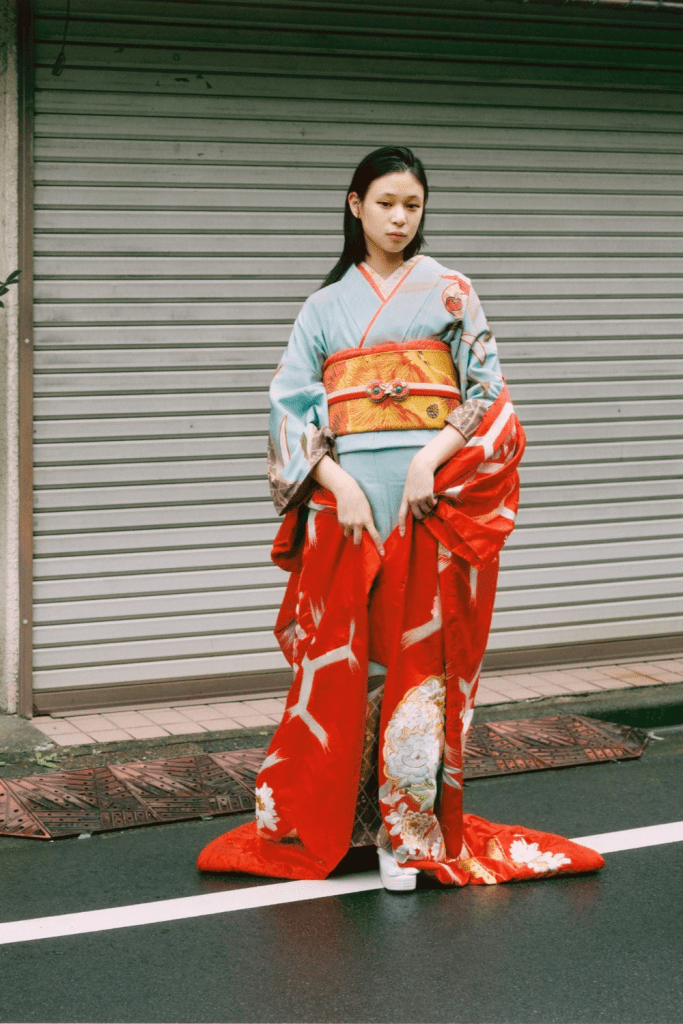
If you’re fascinated by Japanese fashion and want to stay up-to-date with the latest trends, our comprehensive guide on “Japanese Fashion Trends – A Complete Guide To The Japanese Latest Fashion Trend” complements your knowledge about Japanese 90’s fashion, providing insights into the contemporary style scene.
The Best Japanese Streetwear Brands
Inspired by Western designs and a desire to rebel against traditional Japanese culture, the influence of its streetwear brands has spread worldwide. Check out these must-have streetwear brands from Japan, from one-of-a-kind patchwork creations to classic punk pieces.
Yohji Yamamoto
Yohji Yamamoto’s namesake men’s apparel image is supplied in retail chains worldwide, close by his Y’s streetwear assortment. The honor-winning creator is known for making more significant than average, all-dark apparel, from drop-groin pants to covers, shades, and coats. Expect a fly of Japanese energy in Yamamoto’s particular logos and realistic shirt prints. A lofty Bunka Style School former student, Yamamoto has likewise worked with names like Adidas and Hermès, just as intended for acclaimed specialists like Fake Treatment and Elton John.
WTAPS
WTAPS, articulated “twofold taps,” was established in 1996 in Tokyo by Tetsu Nishiyama, otherwise called TET. The brand name comes from the tactical custom of discharging two shots one after another, and its dress follows accordingly. So you can expect military-style streetwear and outdoorsy stuff, from parkas and utility pocket vests to wilderness freight jeans and M-65 coats. It’s not uncommon for WTAPS to sell out its most famous pieces and draw in long queues on discharge days.
NEIGHBORHOOD
Designer Shinsuke Takizawa dispatched NEIGHBORHOOD in 1994 to enjoy his enthusiasm for American cruiser culture. The mark centers on top-of-the-line biker attire that is mainstream in the local bike area in Japan and adored throughout the planet. Brand features include calfskin coats to, street-style hoodies, woolen clothes, high-top tennis shoes, pants, and printed plane coats. NEIGHBORHOOD’s bothered selvage denim and military, troublemaker, and Local American themes are still popular today.
UNDERCOVER
Jun Takahashi established Covert in 1990, and the mark has since gotten a staple on the Japanese streetwear scene. Intensely impacted by underground rock – Takahashi’s staples incorporate realistic Shirts and striking iconography. So it’s nothing unexpected that its trademark peruses: “We make a clamor, not garments.”The Secret is a streetwear staple but also shows high-fashion collections in Paris.It has chipped away at joint efforts with organizations like Uniqlo and Nike.
Final Words
Japanese 90’s fashion remains an enduring influence on contemporary style, with its eclectic mix of tradition, rebellion, and innovation. From Harajuku’s colorful and playful aesthetics to the bold and glamorous looks of Gyaru, these iconic trends continue to inspire fashion enthusiasts worldwide. The innovative work of Japanese designers and the unique street style scene have impacted the global fashion industry. As 90’s fashion makes a comeback, celebrating individualism and innovation in fashion is easy.

